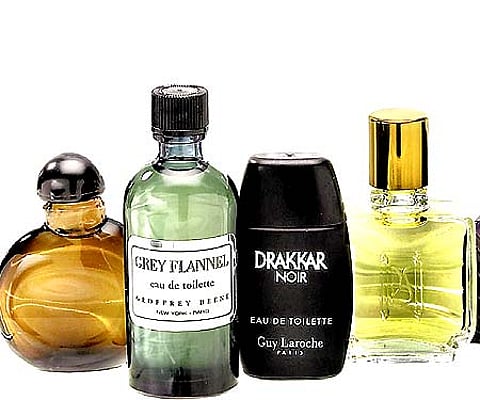

A trip to Europe used to have two mandatory stops—a winery and a perfumery. Perfume makers proudly showcase their fragrances, new and classic. Back home, one finds rows of colourful oil-based perfume bottles in the lanes of Chandni Chowk in Delhi, Charminar in Hyderabad or Hazratganj in Lucknow. Connoisseurs visit these lanes to get custom-made fragrances for themselves.
Kannauj in Uttar Pradesh is India’s undisputed fragrance hub since the time it was the capital of Emperor Harshvardhana in the early 7th century CE. The making of perfumes is mentioned in ancient texts like Charak Samhita and Gangadhara’s Gandhasara. Kannauj continues to produce attar—an oil-based perfume extracted using traditional methods in 350-odd small-scale units in the town. They have captured the smell of the first rains and smell of the earth in their bottles, and deservedly have a Geographical Indication tag.
Visit an upmarket mall and you would find it hard to spot an Indian perfume brand. I could only locate one brand from Titan among all the lists of best-selling perfumes in India. This too has been designed by French perfumers, positioned as a French perfume with even an advertisement in French. Then there are some niche brands that would classify as boutique outfits, catering to a small audience in the luxury segment. Most of the mass consumption of ethanol or alcohol-based fragrances is that of popular international brands, some of which are from multinational FMCG companies operating in India. The oil-based fragrances produced in the small-scale units in the hinterlands of India have a small market in India and the Middle East.
As per the MSME website, the global fragrance and flavour industry is about $24.1 billion and India’s share is just about $500 million. Of this, about 40% is the home fragrance share that includes fragrant sprays and scented oils.
The Fragrance and Flavour Development Centre (FFDC) was set up in Kannauj in 1991 by the Government of India, with two extension centres at Kanpur in UP and Berhampur in Odisha. It aims to serve as an interface between the essential oil, fragrance and flavour industry, and the R&D institutions both in the field of agro technology and chemical technology. They provide training to entrepreneurs on areas like aromatherapy, essential oils, perfumery, making agarbatti and dhoop, and setting up small processing units for primary processing of raw fragrance.
Fragrances are an invisible part of almost every consumer product we use on a day-to-day basis. Right from our toothpastes to cosmetics to food on our plate, fragrances make an important industrial input product. The wellness industry has services like aromatherapy that uses essential oils. The supply chain of fragrances consists of the cultivation of aromatic plants, primary processing at the local level, secondary processing as per the need of the final product and the incorporation in the final product. Perfumes are the simplest product that need just the right concentrate mix and packaging, after which it is more or less a marketing game.
There are majorly 300 different types of fragrant raw materials. Of these, 50% are cultivated and the rest are found in nature. A significant number of these can be easily cultivated. India is a leader in production of raw materials of some of the fragrances like menthol mint, spice oils, oleoresins and some floral extracts. Immense untapped opportunities exist in cultivation and processing of plants like basil, lemongrass, flowers and spices that grow in India’s weather conditions. Setting up a primary processing unit is easy and not capital intensive. Many such units are being managed by self-help groups. A lot of government support is also available to set up such units as they fall under the MSME category.
In terms of trends, deodorants dominate India’s market, though perfumes are slowly gaining share. Note that the difference between the two is just the percentage of fragrance oil they have. Working professionals, particularly women, are major consumers of fragrances in India. Globally, ethanol-based perfumes are making way for new materials like cyclomethicone. The recent surge in the usage of sanitisers due to Covid-19 has added to the demand of fragrances.
Consumers are always looking for fresh new fragrances. So the industry needs to constantly respond by concocting new ways to titillate the olfactory nerves. The consumption of local oil-based perfumes remains limited. Traditionalists say oil-based perfumes work better and last longer in our hot tropical weather. Will this awareness change the consumption patterns? Maybe.
When I asked Shakti Vinay Shukla, the director of FFDC, why we do not have homegrown brands of perfumes, he said perfume choices are driven by fashion houses and most of them are aligned to the European ones.
Is it not time to have homegrown fragrance brands for the large consumer market in India? Should Indian fragrances not carve a niche for themselves in the world? Shouldn’t Indian consumers demand local fragrances? The industry is bound to respond. Vocal for Local can be an umbrella marketing campaign for this.
Anuradha Goyal
Author and founder of IndiTales
(Tweets @anuradhagoyal)